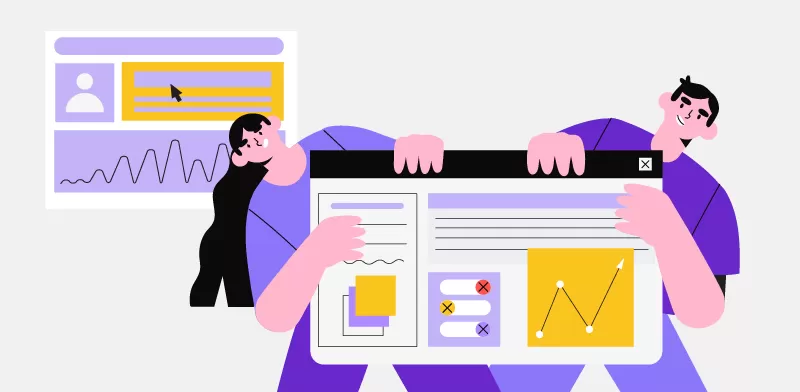
UX + Devs = Friends?
13 Martie, 2023 - by Anamaria Androne
Since the beginning of my UX career, various circumstances have only sometimes allowed me to have contact with the development team responsible for building the product. This was odd since we are two vital parts of a product's lifecycle. Talking to many of my designer friends and acquaintances, I was not alone - the broken communication and collaboration between these two disciplines were often the norm. Even when we do manage to collaborate, it could be better.
Together with my team, we researched this problem and asked 18 designers and 15 developers to give us details about what works and what can be improved in our collaboration. We asked questions that could be answered from both perspectives and a few that could give us clues about where the problems come from.
The pain points we discovered concerned these three areas: communication, trust, and collaboration – they inform one another and are building blocks for healthy relationships. But let's start with the beginning: when do we start working together? Developers answered that they usually reach out to designers at the beginning of the development process, and only some of them wait until they take over story based-tasks. Usually, they need the design to estimate the effort at scrum ceremonies. On the other hand, designers start collaborating with developers in the iteration phase of the design thinking process. It is common practice for the design team to be a few sprints ahead of the development team. Still, it's essential to consider all the technical constraints from the beginning.
There will be setbacks if the entire design process ends before development starts. This generates a waterfall approach even in an agile environment; at least one lead developer must be present at the kick-off meeting. A UX designer's job is to create well-functioning, easy-to-use viable products that achieve business goals and solve the correct problems for the users. It's more than just beautifying an interface; they are not "nice-to-haves" but a core part of the development process. Rather than being two different stages in the product management process, design and development should intertwine and become a two-way street. We should clearly understand what and how the other part works.
In the spirit of better collaboration, developers should be involved in the creative process and brainstorming sessions because they often bring valuable insight and ideas from different perspectives (if we learn how to listen to them). Our findings have shown that 93% of developers care about the user’s experience and that only 31% of designers think that designers care. We believe the considerable gap comes from the misconceptions regarding UX as a practice.
We identified potential friction. We ask each other for input. But what we do with that input sometimes comes across as the best handling to the other party. Understanding what each team created also means more trust and respect. Designers will take the feedback from the development team with the reference that it is due and will actively ask for it. The same attitude will be present on the development side: “I think it’s important to get them to understand the experience as they also have valuable input and can help introduce other ways of doing stuff.”, one designer said.
Rather than seeing each other as two different teams, we should consider ourselves a product team that works towards a common goal in an environment of trust, communication, collaboration, and respect. The knowledge we bring should mesh, and our input should not be perceived as an attack on our livelihood but rather a chance to improve our work and ourselves by understanding different perspectives.

